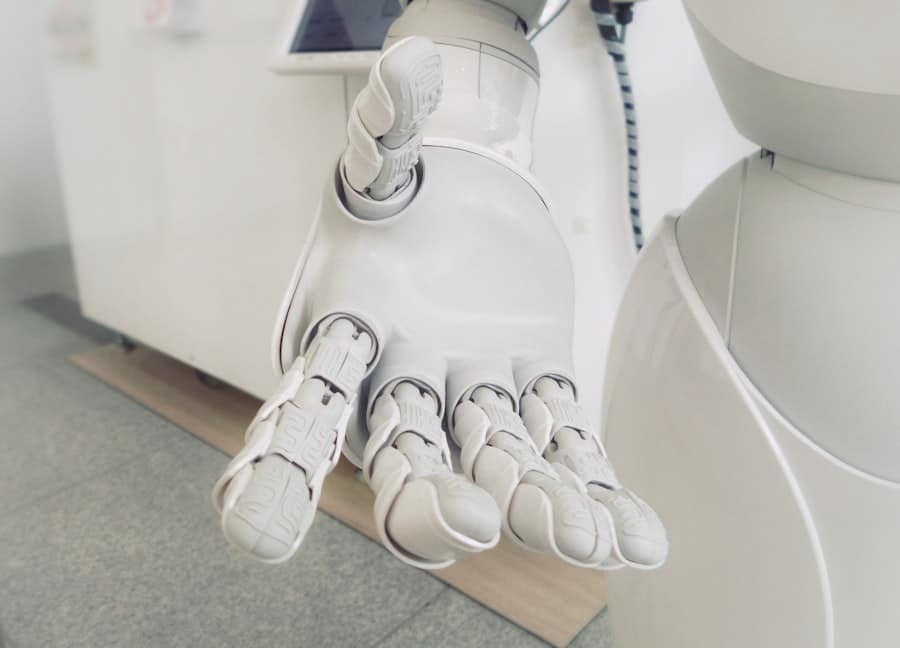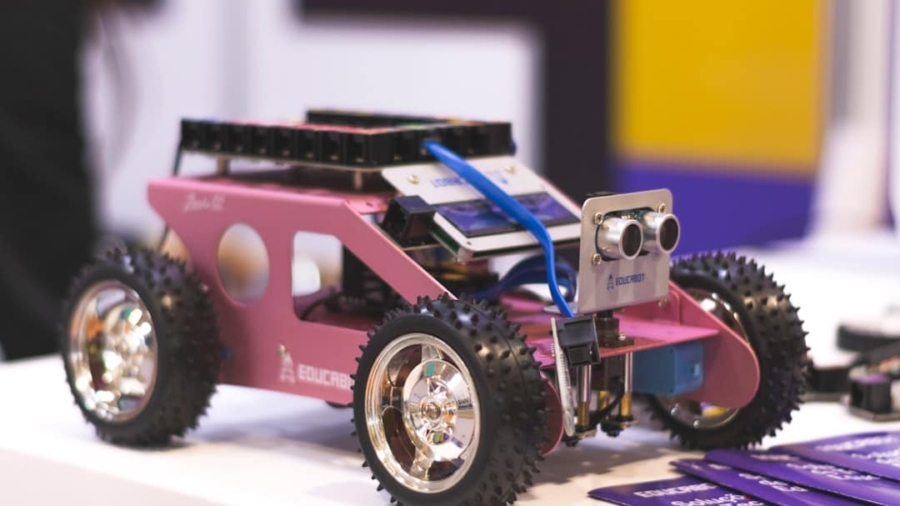Urban farming has emerged as a transformative approach to food production, particularly in densely populated areas where traditional agriculture is often impractical. This innovative practice not only addresses food security but also promotes sustainability and community engagement. Urban farms can take various forms, from rooftop gardens to vertical farms, and they often utilize limited space to maximize yield.
The integration of robotics into urban farming is revolutionizing how food is grown, harvested, and distributed, making the process more efficient and less labor-intensive. The advent of robotics in urban farming is a response to the increasing demand for fresh produce in urban settings, coupled with the challenges posed by climate change and population growth.
Robotics offers solutions that enhance productivity while minimizing environmental impact. By automating various farming tasks, urban farmers can focus on strategic decision-making and innovation rather than manual labor. This synergy between urban agriculture and robotics is paving the way for a new era of food production that is both efficient and environmentally conscious.
Key Takeaways
- Urban farming and robotics go hand in hand to revolutionize agriculture in urban areas.
- Automation and efficiency are key benefits of using robotics in urban farming, allowing for increased productivity and reduced labor costs.
- Robotics play a crucial role in planting and harvesting crops in urban farming, ensuring precision and accuracy.
- Precision agriculture is made possible through the use of robotics, allowing for targeted and efficient use of resources.
- Robotics enable monitoring and maintenance of urban farms, contributing to sustainability and environmental benefits.
Automation and Efficiency in Urban Farming
Automation in urban farming encompasses a range of technologies designed to streamline agricultural processes. From automated irrigation systems to climate control mechanisms, these innovations significantly enhance efficiency. For instance, smart irrigation systems equipped with sensors can monitor soil moisture levels and weather conditions, ensuring that plants receive the optimal amount of water without waste.
This not only conserves water but also promotes healthier plant growth, leading to higher yields. Moreover, automation reduces the reliance on human labor, which can be particularly beneficial in urban environments where labor shortages are common. By employing robotic systems for tasks such as planting, weeding, and harvesting, urban farms can operate with fewer workers while maintaining productivity.
This shift allows farmers to allocate their resources more effectively, focusing on areas such as crop selection and market strategies. The result is a more resilient urban farming model that can adapt to changing conditions and demands.
Robotics in Planting and Harvesting

The role of robotics in planting and harvesting is one of the most significant advancements in urban agriculture. Robotic systems designed for planting can precisely place seeds at optimal depths and spacing, ensuring uniform growth and maximizing yield potential. For example, autonomous seed planters equipped with GPS technology can navigate fields with high accuracy, reducing seed waste and improving overall efficiency.
These machines can operate around the clock, allowing for faster planting cycles that align with seasonal demands. Harvesting is another area where robotics has made substantial contributions. Traditional harvesting methods can be labor-intensive and time-consuming, often leading to crop loss due to delays or improper handling.
Robotic harvesters are designed to gently pick fruits and vegetables without damaging them, ensuring that produce remains market-ready. Companies like Harvest CROO Robotics have developed machines that can autonomously navigate fields, identify ripe crops using advanced imaging technology, and harvest them with precision. This not only increases the speed of harvesting but also reduces the physical strain on human workers.
Precision Agriculture and Robotics
Precision agriculture is an approach that leverages technology to optimize field-level management regarding crop farming. Robotics plays a crucial role in this paradigm by providing data-driven insights that enhance decision-making processes. Drones equipped with multispectral cameras can survey urban farms from above, capturing detailed images that reveal plant health, soil conditions, and pest infestations.
This aerial data allows farmers to make informed decisions about resource allocation, such as where to apply fertilizers or pesticides. Additionally, robotic systems can be integrated with data analytics platforms to create a comprehensive view of farm operations. For instance, soil sensors can provide real-time data on nutrient levels, which can be analyzed alongside weather forecasts to determine the best times for planting or harvesting.
This level of precision minimizes waste and maximizes productivity by ensuring that every action taken on the farm is based on accurate information. As urban farming continues to evolve, the integration of precision agriculture techniques will become increasingly vital for maintaining competitiveness in the market.
Monitoring and Maintenance with Robotics
Monitoring and maintenance are critical components of successful urban farming operations, and robotics offers innovative solutions to these challenges. Automated monitoring systems can track various environmental factors such as temperature, humidity, and light levels within greenhouses or vertical farms. These systems often utilize Internet of Things (IoT) technology to relay data in real-time, allowing farmers to respond quickly to any fluctuations that could affect crop health.
Robotic maintenance tools are also becoming more prevalent in urban farming settings. For example, robotic weeders can autonomously navigate through crops, identifying and removing weeds without harming the plants. This not only saves time but also reduces the need for chemical herbicides, promoting a more sustainable approach to pest management.
Furthermore, robotic systems can assist in routine maintenance tasks such as cleaning equipment or managing waste, ensuring that farms operate smoothly and efficiently.
Sustainability and Environmental Benefits of Robotics in Urban Farming

Reducing Resource Consumption
One of the most significant advantages of robotics in urban farming is the reduction of resource consumption. Automated irrigation systems minimize water usage by delivering precise amounts directly to plant roots, significantly lowering water waste compared to traditional methods.
Decreasing Carbon Footprint
Robotics can also help reduce the carbon footprint associated with food production. By optimizing planting and harvesting processes, robotic systems decrease the need for transportation by enabling local food production within urban areas. This not only shortens supply chains but also reduces greenhouse gas emissions associated with transporting food over long distances.
Sustainable Energy Sources
Furthermore, many robotic systems are designed to operate on renewable energy sources, further enhancing their sustainability profile.
Challenges and Limitations of Robotics in Urban Farming
Despite the numerous advantages that robotics brings to urban farming, several challenges and limitations must be addressed for widespread adoption. One significant barrier is the high initial investment required for robotic systems and automation technologies. Many small-scale urban farmers may find it difficult to afford these advanced tools, which could lead to disparities in access to technology within the agricultural community.
Another challenge lies in the complexity of integrating robotics into existing farming practices. Farmers may require training to effectively utilize these technologies, which can be a time-consuming process. Additionally, there are concerns about job displacement as automation becomes more prevalent in agriculture.
While robotics can alleviate labor shortages, it may also lead to reduced employment opportunities for workers in traditional farming roles.
Future of Robotics in Urban Farming
The future of robotics in urban farming appears promising as technological advancements continue to evolve at a rapid pace. Innovations such as artificial intelligence (AI) and machine learning are expected to play a pivotal role in enhancing the capabilities of robotic systems. For instance, AI algorithms can analyze vast amounts of data collected from various sensors and drones to provide actionable insights that improve crop management strategies.
Moreover, as urban populations grow and the demand for fresh produce increases, the need for efficient food production methods will become even more critical. Robotics will likely become an integral part of urban farming infrastructure, enabling cities to produce food sustainably while minimizing environmental impact.
As we look ahead, it is clear that the intersection of robotics and urban farming holds immense potential for transforming how we grow food in cities. By embracing these technologies, urban farmers can not only increase their productivity but also contribute to a more sustainable future for our planet.
A related article to How Robotics Is Used in Urban Farming is “Top Trends on YouTube 2023” which discusses the latest trends and predictions for the popular video platform. To read more about this topic, check out the article here.
FAQs
What is urban farming?
Urban farming refers to the practice of growing, processing, and distributing food in or around a village, town, or city.
How is robotics used in urban farming?
Robotics is used in urban farming to automate various tasks such as planting, watering, weeding, and harvesting. This helps to increase efficiency and reduce the need for manual labor.
What are the benefits of using robotics in urban farming?
Using robotics in urban farming can lead to increased productivity, reduced labor costs, and more precise and consistent crop management. It also allows for farming in limited spaces and can help address labor shortages in urban areas.
What types of robots are used in urban farming?
Various types of robots are used in urban farming, including autonomous tractors, robotic arms for planting and harvesting, drones for monitoring and spraying, and automated systems for watering and fertilizing crops.
Are there any challenges associated with using robotics in urban farming?
Challenges associated with using robotics in urban farming include the high initial investment cost, the need for specialized training to operate and maintain the robots, and potential technical issues that may arise. Additionally, integrating robotics into existing farming systems can be complex.

